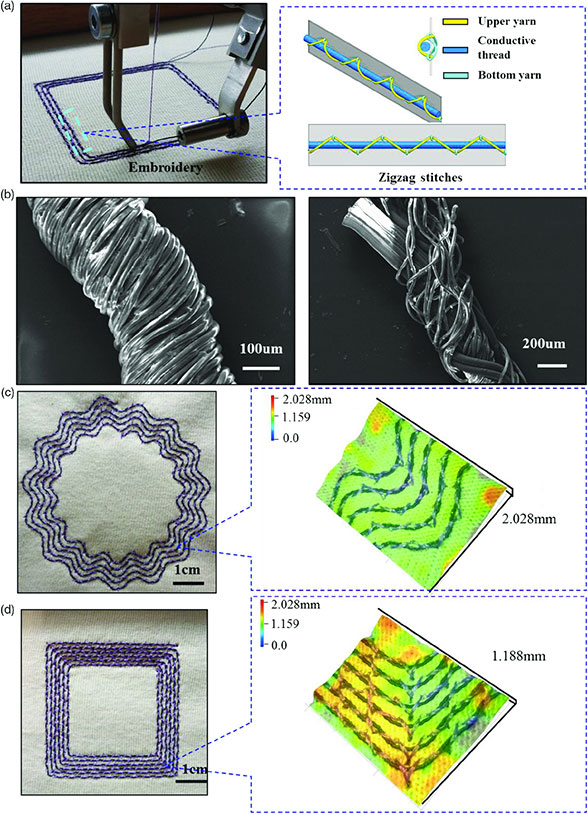
A team of researchers from universities in the UK and China have developed a way to use standard machine embroidering equipment to add NFC capabilities to items of clothing so that the technology continues to work reliably even when the fabric is stretched out of shape by the wearer.
The breakthrough involves combining a strain‐free conductive yarn embroidering process with elongation‐resilient coil designs and can be combined with energy harvesting technology to remove the need to include a battery or support for an external power supply.
“We used this technique to build a complete NFC‐based energy‐harvesting body sensor network and demonstrate that the NFC chip together with the embroidered coil antenna can generate stable harvested energy under extreme deformation,” they explain.
“The complete sensor system can be stably powered by the harvested energy and can be used as a wireless, battery-less body temperature-monitoring system.”
“We use a single high-conducting thread to form the coil geometry and use zigzag stitches to fasten the conducting thread in place,” the team adds.
“The high conducting thread is made of copper fibres, twisted and covered with highly stretchable nylon yarns.
“The width of the zigzag stitches (d=450μm) is slightly larger than the diameter of the conductive thread (d=350μm), so the conducting thread can move along the stitches when the substrate fabrics is elongated or stretched.”
“To further reduce the strains on the substrate during deformation, we revise the conventional coil spiral with a sine‐wave modulation,” they explain.
“Experiments show that this design can ensure that the coil geometry stretches evenly in all directions during elongation, avoiding bumps between the embroidery regions or inside the coil regions as compared with [a] conventional spiral coil.”
“These two mechanical improvements (zigzag fastening stitches and sine‐wave modulation) will maintain good stretchability of fabrics and yarns and, in the meantime, allow the NFC coil to endure extreme stretching with up to 50% of elongation.”
Next: Visit the NFCW Expo to find new suppliers and solutions